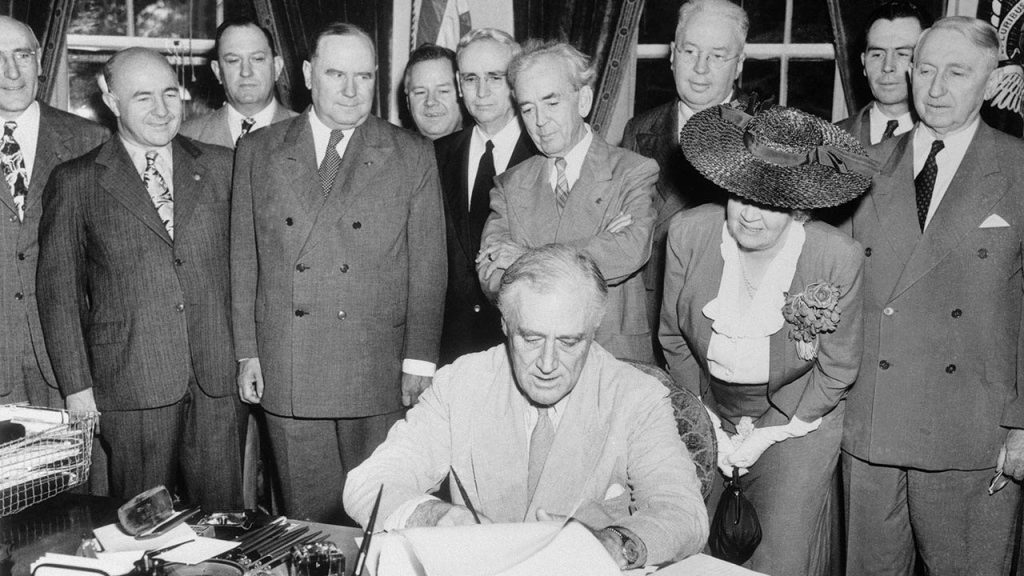On June 22, 1944, President Franklin D. Roosevelt signed the GI Bill, officially known as the Servicemen’s Readjustment Act of 1944. This legislation was created to compensate returning members of the armed services for their service in World War II. The American Legion was instrumental in advocating for the bill, which provided returning servicemen access to unemployment compensation, low-interest home and business loans, and funding for education. The bill aimed to help veterans adjust to civilian life by offering federal aid in various areas including hospitalization, housing, and most notably, education.
Roosevelt’s administration created the GI Bill as part of the New Deal reforms to prevent a relapse into the Great Depression after the end of the war. Over the next seven years, approximately eight million veterans received educational benefits under the GI Bill. About 2.3 million veterans attended colleges and universities, while 3.5 million received school training and 3.4 million received on-the-job training. This influx of students led to widespread improvement and expansion of university facilities and teaching staff. The number of degrees awarded by U.S. colleges and universities doubled between 1940 and 1950, contributing to a significant increase in the percentage of Americans with bachelor’s or advanced degrees.
The GI Bill also supported the post-war baby boom by providing home loans to veterans, alleviating a severe housing shortage. In total, 4.3 million home loans worth $33 billion were granted to veterans by 1955, leading to the purchase of 20% of all new homes built after the war. This economic boom had a ripple effect across the economy, preventing concerns of a new depression and creating prosperity for a generation. The GI Bill was regarded as one of the most successful pieces of social welfare legislation ever developed, benefiting millions of veterans and their families.
Although the original GI Bill ended in 1956, newer programs have allowed veterans from subsequent wars such as Korea, Vietnam, Iraq, and Afghanistan to pursue college educations and access meaningful careers. Over a 50-year span, the GI Bill had a significant impact, with 20 million veterans and dependents using its education benefits and 14 million home loans guaranteed, for a total federal investment of $67 billion. Prominent individuals such as former Presidents George H.W. Bush and Gerald Ford, former Vice President Al Gore, and entertainers Johnny Cash, Ed McMahon, Paul Newman, and Clint Eastwood have all benefitted from the GI Bill.
President George H.W. Bush acknowledged the transformative impact of the GI Bill, stating that it changed the lives of millions by replacing old roadblocks with paths of opportunity. The bill remains a symbol of gratitude towards soldiers for their service in defending freedom during World War II and beyond. Despite its initial focus on World War II veterans, the GI Bill has continued to support and enhance the lives of veterans from subsequent conflicts, providing them with access to education, housing, and career opportunities. Its legacy as a landmark piece of social welfare legislation endures as a testament to the importance of supporting those who have served their country.


